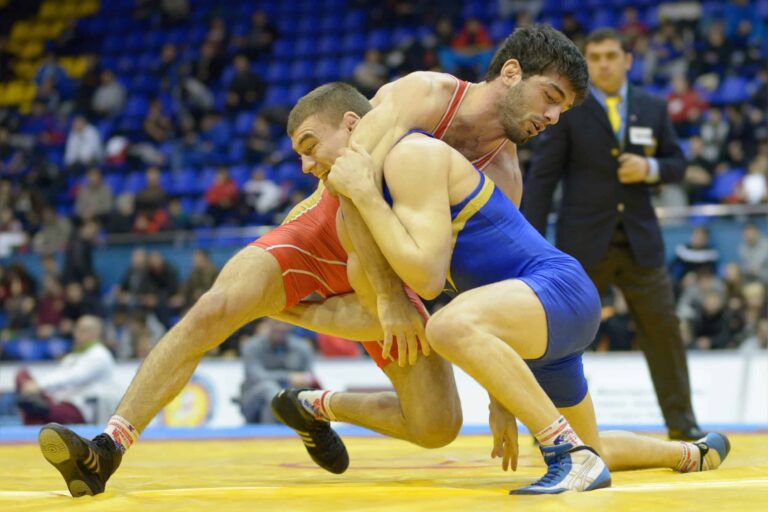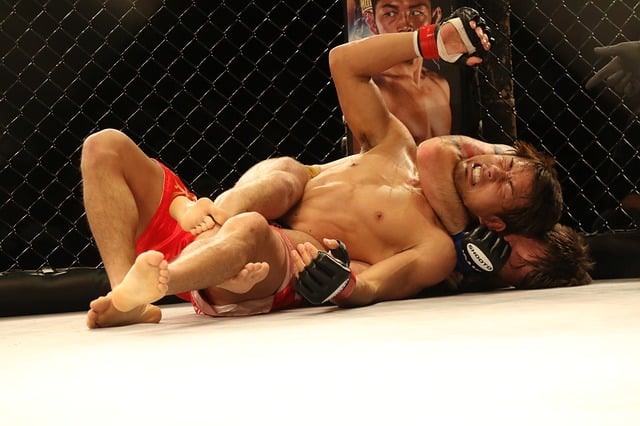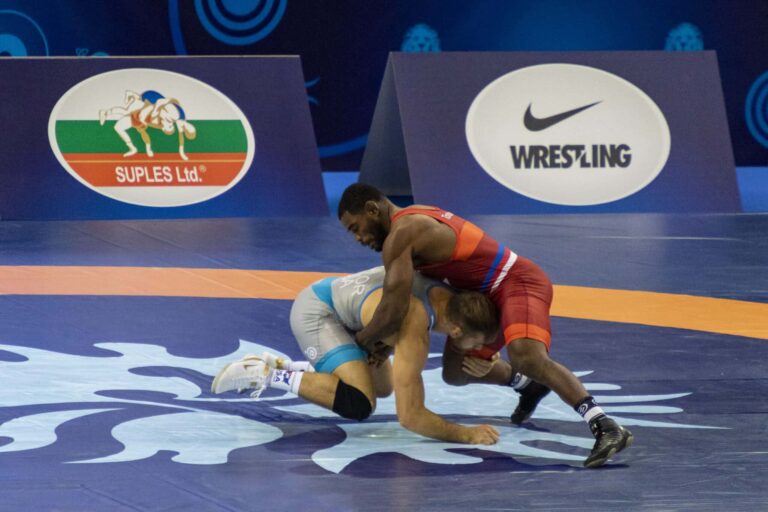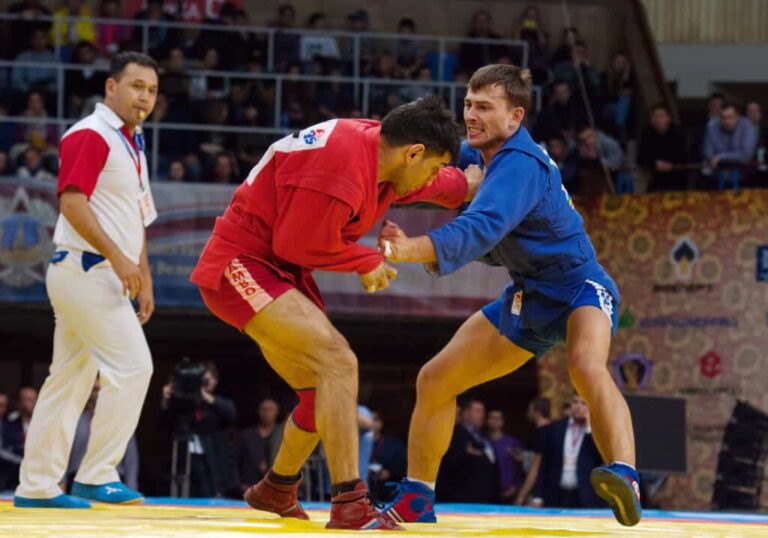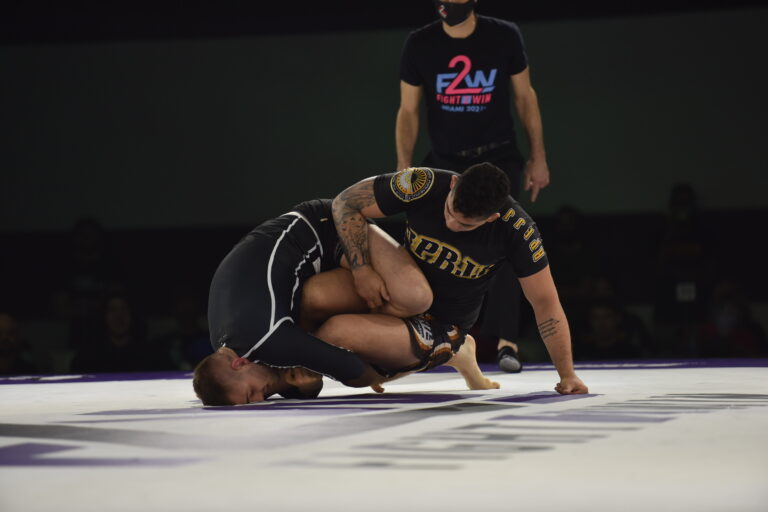Beach Wrestling: Rules, History, and How To Get Started

Beach wrestling is a wrestling sport held on sand. It’s widely practiced all around the world by men and women. But what exactly is beach wrestling, and what makes it different from other wrestling styles?
Beach wrestling, aka sand wrestling, is an international wrestling style for men and women performed on beach sand. It’s popular among amateurs given its simple rules and point system. The match begins in the standing position and lasts for 3 minutes. The winner is decided based on points or by pin.
In this article, we’ll discuss the history of beach wrestling. We’ll also cover the rules, victory conditions, illegal holds and fouls, and more.
History of Beach Wrestling
Beach wrestling is among the oldest versions of international competitive wrestling. Still, it wasn’t systematized until 2004 when the International Federation for Wrestling (FILA), now known as The United World Wrestling (UWW), decided to add the sport to the international wrestling style.
FILA made this decision during a Congress in Athens, Greece, on August 20th, 2004. FILA Congress decided to codify Beach wrestling to bring together all the different traditional wrestling styles practiced on the sand and make it popular all over the world.
It mirrors wrestling rules before the introduction of wrestling mats to the sport, which is why FILA aimed to make it a recognized and popular sport worldwide.
Beach wrestling gained popularity because of its simple rules and because technical means, such as a mat and wrestling gear, aren’t necessary. Therefore, impoverished countries can still practice and enjoy the sport.
Since 2004, Beach wrestling and its notable competitions have made some changes, such as updated weight classes and age categories. We’ll get more into that later.
Modern Wrestling
The United World Wrestling identifies two main categories of modern wrestling—international wrestling and folkstyle wrestling. Beach wrestling falls under the international style.
International Wrestling
Several wrestling styles fall under the international wrestling category, but only three are recognized as Olympic Disciplines:
- Greco-Roman wrestling
- Men’s freestyle wrestling
- Women’s freestyle wrestling
Other international wrestling styles that aren’t considered Olympic include amateur pankration, belt wrestling, and of course, beach wrestling.
Folkstyle wrestling is different from international wrestling because every style is unique to a specific culture.
Beach Wrestling Rules
The rules of beach wrestling are simple, which is why it’s considered an amateur form of wrestling. Many people begin their competitive wrestling careers with beach wrestling for this reason.
All age categories have the same rules. Matches consist of one period of three minutes. At the beginning of each match, the wrestlers’ names are announced, at which point their uniforms and overall appearance is inspected for correctness and to ensure there is no oil or other substance present.
Like most wrestling styles, matches begin in the standing position, with the opponents facing each other, waiting for the referee. The match takes place in a sand-filled circle within a diameter of seven meters (22.97 feet).
Ways To Win
Winning is pretty straightforward. There is a point-scoring system involved, and the first wrestler to reach three points wins. If there’s a tie at the end of the match, a winner is declared based on the following:
- The highest holds value
- The lowest number pulled during the draw
- The last point scored
- The lightest-weighing wrestler
Scoring Rules
There are few scoring rules for beach wrestling, so it’s easy to keep track. Since it is a standing style, the goal is to get the opponent on the ground or out of the circle. Wrestlers get one point for the following actions:
- Bringing any part of the opponent’s body to the ground (except the hands)
- Forcing the opponent out of the circle
- And if the opponent performs an illegal hold or action
If a wrestler can pin their opponent’s shoulder to the ground, they’re immediately declared as the winner.
Beach Wrestling Uniforms
The uniforms differ from many other wrestling styles. Most modern wrestling styles require the wrestlers to wear a one-piece tight-fitting spandex. However, with beach wrestling, the wrestlers wear swimsuits. They may also wear spandex or any type of athletic shorts.
Shoes aren’t allowed—the wrestlers must be barefoot. Wrestlers also aren’t allowed to wear any bandages unless they’re injured or ordered to by a doctor.
No jewelry of any kind is allowed given the risk of injury to the opponent, long hair must be tied back and out of the way.
Wrestlers must have no oil or grease on their bodies as it can pose an unfair advantage, and they should trim their nails to prevent injuries.
Illegal Holds and Techniques
While wrestling is very physical and the objective is to pin your opponent, wrestlers need to follow strict rules to avoid disqualification. If the referee notices any illegal holds or actions, they’ll reward the opponent with one point.
Illegal holds or actions include:
- Holds that can cause dislocations. Dislocations can be accidental due to a lack of flexibility and strength. However, some holds can purposefully cause dislocations.
- Holds that can result in neck cranks. Neck cranks are a form of spinal locks performed by pulling or twisting the head beyond its range of motion.
- Biting, punching, or kicking. These actions can injure the opponent and are therefore prohibited.
- Fish hooking. Typically used as self-defense, fish hooking refers to inserting the fingers into the mouth, eyes, or nose in wrestling.
- Pulling hair or other body parts. Tugging at the opponent’s hair, ears, nose, or other body parts is illegal.
- Attacking the groin. Going for the groin is frowned upon and illegal in competitive wrestling.
Other actions that will result in disqualification include pretending to be injured or leaving the competition area during the match.
Notable Beach Wrestling Competitions
There are many notable competitions that athletes can compete in to earn the champion title or win prize money. Some competitions feature many different sports along with Beach wrestling.
World Beach Wrestling Championship
The World Beach Wrestling Championship is an annual competition organized by United World Wrestling. The first Championships took place in 2006 and were hosted in Antalya, Turkey.
The host for the World Beach Wrestling Championship changes every year, the last championship being held in Zagreb, Croatia in 2019. The championship only featured the senior division (20 years or older) until 2010.
Initially, there were only two weight classes for the senior division, heavyweight and lightweight, but the weight classes expanded in 2011 along with the age categories. We’ll get more into the weight and age classes later in the article.
The World Beach Wrestling Championship is considered the most important international competition conducted for beach wrestling.
World Beach Games
Along with the World Beach Wrestling Championship, beach wrestlers also participate in the World Beach Games. The World Beach Games is an international sports competition organized by the Association of National Olympic Committees (ANOC).
The Games include wrestling and many other beach sports, such as water skiing, volleyball, and tennis.
Unlike the World Beach Wrestling Championship held annually, wrestlers participate in the World Beach Games every two years. The first edition was in 2019 and was supposed to be held in San Diego, US. However, due to insufficient funding, the host city relocated to Doha, Qatar.
Beach Wrestling World Series
The Beach Wrestling World Series is seen as part of the World Beach Wrestling Championship. However, the World Series focuses more on the senior division. The UWW created the Beach Wrestling World Series, which consists of four events all over the world.
Since 2019, the Beach Wrestling World Series has been used to determine the World Wrestling titles for both men and women in the senior division.
As with the World Beach Wrestling Championship, the Beach Wrestling World Series was held in Zagreb, Croatia in 2019.
The Beach Wrestling World Series consists of multiple international competitions, and each event awards the winner with 15,000 CHF, equal to about 16,513 USD.
Asian Beach Games
Asian Beach Games are similar to the World Beach Games, but they are held every four years, and many countries across Asia participate in them. The most recent Asian Beach Games were in 2016 and hosted by Danang, Vietnam.
The Asian Beach Games also showcase many other beach-related sports. Some other sports include beach water polo, beach soccer, beach handball, and sailing.
Beach Wrestling Age and Weight Classes
Weight classes have made significant advances since 2011. As mentioned, during the first World Beach Wrestling Championships, there were only two weight classes: lightweight and heavyweight. Currently, men’s and women’s divisions offer four weight classes.
Weigh-ins for competitions are typically done on the same day of the competition, two hours before, and will take around 30 minutes. During the weigh-in, wrestlers should wear their uniforms to receive the most accurate results.
Men‘s Weight Categories
Men have four weight classes that range from 70 kg to over 90 kg:
- 70 kg (154lbs)
- 80 kg (176lbs)
- 90 kg (198lbs)
- Over 90 kg (over 198lbs) or heavyweight
Women‘s Weight Categories
Women also have four weight classes, ranging from 50kg (110lbs) to over 70kg (over 154lbs):
- 50kg (110lbs)
- 60kg (132lbs)
- 70kg (154lbs)
- Over 70kg (over 154lbs)
Age Brackets
In terms of age, there are usually three categories. The Beach Wrestling World Series and World Beach Wrestling Championships allow wrestlers as young as 16 to compete, while the World Beach Games only allow eligible seniors. These age classes include:
- Cadets (16-17 years old)
- Juniors (18-20 years old)
- Seniors (20 years old and up)
However, with parental and medical certifications, cadets as young as 15 and juniors as young as 17 can also compete. Moreover, 18-year-olds can compete in the senior division with a medical certificate.
Beach Wrestling vs. Other Common Wrestling Styles
Beach wrestling is different from other wrestling styles in many ways, but there are also similarities. Popular wrestling styles such as freestyle and catch wrestling have similarities and differences to beach wrestling.
Freestyle Wrestling vs. Beach Wrestling
Freestyle wrestling is a standard international style of wrestling seen in the Olympics. With freestyle wrestling, wrestlers can use their entire body to pin the opponent, and there are minimal limitations.
Both styles allow the use of the legs. However, beach wrestling is in the standing position, so wrestlers who touch the sand (aside from the hands) lose a point.
The main difference between the two is what qualifies as a winning point. While beach wrestling requires a part of the opponent’s body or the entirety of his/her back touching the sand, freestyle requires the wrestler to pin the shoulders to the mat for 1-2 seconds.
Folkstyle Wrestling vs. Beach Wrestling
Folkstyle wrestling is common in middle and high schools and even at the collegiate level. It’s very similar to freestyle wrestling because both styles require the wrestlers to pin the opponent’s shoulders to the mat.
It is similar to beach wrestling in many ways, including the point system. Folkstyle is a little more complicated with its point system, but both styles can win by getting points or pinning the opponent. They both also offer points if the other opponent performs an illegal move.
Folkstyle wrestling consists of three two-minute rounds in high school and one three-minute round or two two-minute rounds at a collegiate level, unlike beach wrestling’s one round of three minutes. There is also wrestling from the top and bottom positions in folkstyle wrestling.
Greco-Roman Wrestling vs. Beach Wrestling
Greco-Roman Wrestling is an international and amateur style of wrestling. It’s a recognized sport in the Olympics, along with freestyle wrestling.
Its pointing system is different from beach wrestling. What’s more, as mentioned, it consists of one period of three minutes. With Greco-Roman wrestling, there are two three-minute periods.
The main objective of Greco-Roman wrestling is to pin the opponent’s shoulders to the mat 1-2 seconds, just like freestyle wrestling. One thing that separates this style is that you cannot take your opponent down below the waist.
Like Beach wrestling, wrestlers can win by disqualifications, meaning the wrestler will have three “cautions” before being completely disqualified.
Benefits of Beach Wrestling
Participating in beach wrestling has many benefits. Not only is it exciting to be in the sand, but it offers arguably more advantages than many other styles.
All-Embracing
The UWW established Beach wrestling to give everyone, even countries with limited financial means, a chance to practice or compete in the sport. All that’s needed is a sandy area and a swimsuit, rather than mats, specific wrestling uniforms, and other wrestling equipment.
Gain Experience
Beach wrestling is a great starting point for a professional career. Its pointing system is easy, and the matches themselves are only three minutes long, so it’s not too strenuous.
Wrestling in the sand can be tricky. The style involves many upper-body throws and setups. So, you have to widen your capabilities and learn more attack moves, making you a better wrestler on a regular mat.
All Skill Levels Are Welcome
It’s easy to find tournaments for all skill levels and ages. As it’s an international competitive sport, there’s bound to be competitions for multiple skill levels.
There are competitions just about everywhere. Even if you don’t live near a beach, sand volleyball courts are an excellent place to hold matches or competitions.
A Great Way To Improve Your Physical Fitness
Wrestling is one of the most physically demanding sports out there. You have to be fast, physically strong, and have quick reflexes to succeed in this competitive sport.
The added difficulty of moving around in the sand can make you quicker on a wrestling mat if you plan to go that route.
Helps Build Confidence
This benefit goes hand in hand with improving your physical fitness. Wrestling, in general, will help build confidence in your appearance, as you’ll become faster and stronger. It can also improve your mental health.
Learning how to wrestle, especially in the beautiful outdoors, will make you more confident in your abilities to defend yourself if it’s ever needed. And the physical exercise, as well as the fresh air, will do wonders for your overall mental health.
Not to mention, joining a team or tournament is a great way to make new friends with similar hobbies.
What Is a Good Age To Begin?
Many people claim the best age to begin wrestling is around four or five years old. Honestly, there’s no set rule on when to start because every child is different.
Some might be ready when they’re four or five, while others might do better beginning around nine or ten years old. It’s also important to consider their size. If they’re smaller than others their age, it might be a better idea to wait until they grow a little.
However, it is an excellent style to introduce to children and put them in the world of wrestling. They’ll understand the easy pointing system, and since the matches are on the sand, it isn’t too rough of a style.
Of course, like in most sports, this does not mean there is no risk of injury. The moves are in the standing position, so there isn’t as much pinning or floor work involved as there are in other types.
Not only this, but children will spend time outdoors while wrestling. So, if you’re looking to get your child or children into wrestling, starting them in the sand is an excellent idea!
Final Thoughts
Beach wrestling is a widely known sport, and it’s only getting more popular. It’s a favorite among many wrestlers because of the easy-to-follow rules and pointing system, making it a great style to introduce to children wanting to be involved in wrestling.
It has a lot in common with other international styles, but it’s unique in its way. Being in the sand and outdoors makes this style appealing to many, and men and women of all ages love to participate. If you’re going to get into wrestling, why not start on the sand?
